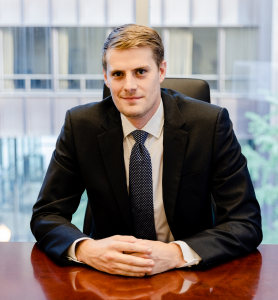
Medical errors are unsettlingly common and can cause significant harm. They can occur in various healthcare settings, from hospitals to pharmacies. These errors can be life-altering, whether due to a miscommunication or procedural oversight.
At Conboy Law, we know that most healthcare providers and healthcare professionals would do anything for their patients. At the same time, preventable medical errors, such as operating on the wrong patient, can have devastating consequences. Learn more about some of the top causes of medical errors below. Then, schedule a free consultation with our experienced medical malpractice attorney.
Medical errors rank among the top causes of death and injuries in the United States. While most healthcare professionals and healthcare providers have the patient’s best interests at heart, mistakes still happen. A few key points to keep in mind include:

Medication errors are some of the most common mistakes made in healthcare settings. These mistakes can happen at any stage, from prescribing to administering medication. Giving the wrong drug or wrong dose can lead to serious patient harm.
A medication error could take the following forms:
It’s vital always to double-check medications and dosages. A small oversight can lead to grave outcomes.
Getting a diagnosis right is a critical aspect of healthcare. However, errors in this area are more common than one might think. Let’s explore:
Accurate and timely diagnosis is the cornerstone of effective treatment. Recognizing these diagnostic pitfalls can help in ensuring the best patient care.

Surgery, while life-saving, comes with its own set of risks. These risks are heightened when errors come into play.
Here are some surgical errors that are alarmingly common:
The stakes are incredibly high in surgeries. It’s essential for healthcare providers to adhere strictly to protocols and checks to ensure patient safety. Operating inappropriately could even lead to an amputation.
Clear communication is a pillar of efficient healthcare. However, communication breakdowns can lead to errors:
Inadequate staffing can contribute to many of the issues above. These could even lead to childhood injuries.

Medical records play a pivotal role in patient care. But what happens when there are mistakes in documentation?
Documentation provides a roadmap for treatment. Ensuring accuracy and thoroughness in medical records is critical in preventing medical errors.
Sometimes, errors stem from broader organizational issues. These systemic errors can be harder to spot but can have widespread implications:

Medical errors often arise from a mix of human and systemic factors. While human errors are inevitable, understanding them can lead to measures that mitigate their impact. On the other hand, systemic errors reflect deeper issues in the healthcare system that need a collective effort to address.
Human error is a principal contributor to medical mistakes. But what drives these errors? Let’s dive deeper:
While individual mistakes happen, sometimes the system is the culprit. Here’s how:
By tackling these systemic issues, healthcare providers can ensure consistent and safe patient care.
Patients play a pivotal role in their healthcare journey. Sometimes, factors related to the patient can contribute to medical errors:
Empowering patients with knowledge and open communication can mitigate these factors and enhance their healthcare experience.
A. Medication Safety: Ensuring medication safety is paramount to prevent errors. Here are some strategies:
These measures, when implemented effectively, can drastically reduce medication errors and their repercussions.
B. Diagnostic Accuracy
Precise diagnosis is the cornerstone of effective treatment. Strategies to enhance diagnostic accuracy include:
By valuing accuracy in diagnosis, we can ensure the right treatments for patients.
C. Surgical Safety
Surgeries come with inherent risks. But with the right measures, many of these can be mitigated:
These strategies can minimize surgical errors and ensure patient safety.
D. Communication Enhancement
Clear and effective communication is a cornerstone of patient safety. Strategies to enhance this include:
Prioritizing communication can reduce errors and improve patient-provider relationships.
E. Documentation Improvement
Accurate documentation is vital for effective patient care. Here are some ways to improve it:
With better documentation practices, healthcare providers can ensure effective and safe patient care.
F. Systemic Changes
Addressing the broader issues in healthcare can prevent widespread errors. Strategies include:
Implementing these systemic changes can pave the way for safer healthcare practices.

When medical errors occur, they don’t just have medical implications. They also carry legal and ethical repercussions. For patients, understanding these considerations can empower them in their healthcare journey. For healthcare providers, awareness can pave the way for better practices and decision-making.
Ethical considerations go hand in hand with medical practice. Every patient has the right to safe and effective care. When this is compromised, it poses ethical dilemmas for healthcare providers. Balancing the need for transparency with potential legal repercussions is a tightrope many medical professionals walk daily.
Medical malpractice is a legal term that pertains to negligence by healthcare providers. When medical care falls below accepted standards, it can result in harm to the patient. Patients can seek compensation for catastrophic injuries or damages caused by these errors.
For healthcare providers, understanding malpractice and its implications is crucial. While no one enters the field intending to harm, mistakes happen. Being aware of potential pitfalls and liabilities can lead to more cautious and better-informed practices.
Every patient has the right to understand the potential risks and benefits of a treatment. This understanding leads to informed consent. It’s unethical and illegal to administer treatments without this consent, barring a few emergency exceptions.
For healthcare providers, ensuring informed consent means having open dialogues with patients. For patients, it means understanding your rights and making informed decisions about your health.
Transparency is paramount in healthcare. Medical professionals are often required by law to report certain errors. Disclosure fosters trust and can lead to better patient-provider relationships.
Understanding these reporting requirements ensures compliance and ethical practice. For patients, it means holding healthcare providers accountable and ensuring transparency in care.
When medical errors result in harm, patients have the right to compensation. Here are the types of damages they can seek:
It’s essential for patients to understand their rights and the potential compensation they can seek.

If you believe you’ve been a victim of a medical error, it’s crucial to seek expert legal guidance. At Conboy Law, our dedicated team understands the intricacies of medical malpractice. We’re here to help you navigate the legal landscape and fight for your rights.
Medical errors can have devastating consequences. But with the right legal partner, you can ensure justice and appropriate compensation. Reach out to Conboy Law today, and let us stand with you in your pursuit of justice.
If you or a loved one has been injured, don’t hesitate to contact our injury attorneys today!
"*" indicates required fields


